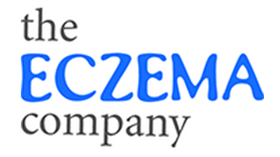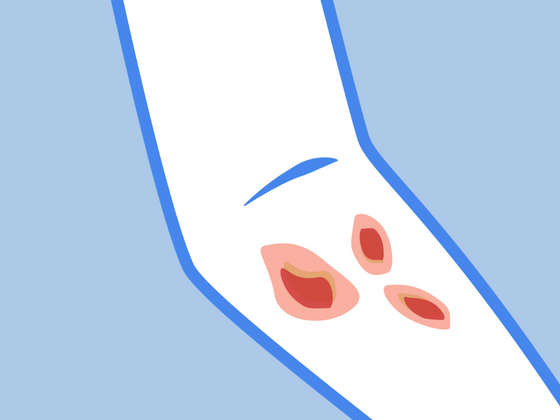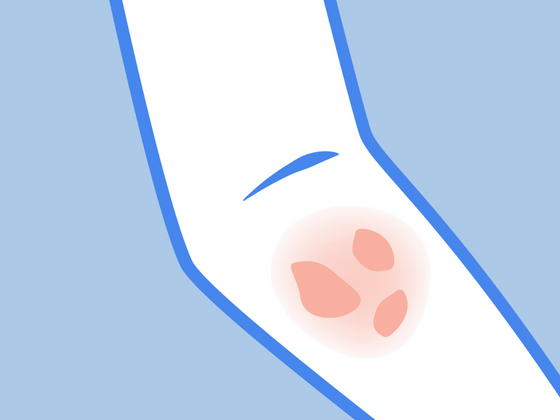Eczema, also known as atopic eczema, is a common skin condition characterized by patches of dry, itchy, and irritated skin. While having eczema is bad enough, dealing with a secondary skin infection can make things even worse! These infections can lead to severe complications if not managed properly, making it essential to understand and address them promptly.
In this blog, we will explore all you need to know about eczema secondary infections, including:
-
The types of secondary infections that can affect eczema
-
How to recognize the symptoms of an infected eczema flare
-
Treatment options and preventive measures to avoid complications
Read on to learn more about managing eczema secondary infections and how to keep your skin healthy and infection-free.
What is a Secondary Infection?
A secondary infection happens when the broken skin from eczema becomes infected with bacteria, viruses, or fungi. These infections can exacerbate eczema symptoms, leading to more severe inflammation, pain, and potential systemic effects. People with eczema are particularly susceptible to secondary infections due to their compromised skin barrier. This is especially concerning for infants and young children, who may benefit from specialized eczema cream for babies.
Secondary Skin Infections and Eczema
Bacterial Skin Infections
-
Staphylococcus aureus (Staph Infections): The most common bacterial infection associated with eczema. Staph bacteria can cause skin infections that result in redness, oozing blisters, and crusty sores.
-
Secondary Bacterial Infection: This occurs when bacteria infect open sores or broken skin caused by scratching. Symptoms include increased redness, swelling, and pus-filled blisters.
-
Antibiotic Treatment: Oral antibiotics or topical antibiotics may be prescribed to treat bacterial infections and reduce inflammation.
Viral Infections
-
Herpes Simplex Virus (HSV): This virus can cause a condition called eczema herpeticum, characterized by painful, fluid-filled blisters that can spread quickly if not treated. Fever, flu-like symptoms, and swollen lymph nodes are common.
-
Cold Sores: Also caused by HSV, these appear as fever blisters or bumps around the mouth and can spread to eczema-affected areas.
-
Antiviral Medication: Prescription antiviral medications are crucial for managing viral infections in eczema patients.
Fungal Infections
-
Two Main Fungal Infections: Candida (yeast infections) and dermatophytes (ringworm) are common fungal infections that can affect eczema patients. These infections thrive in warm, moist areas like skin folds.
-
Antifungal Creams: Topical antifungal treatments are used to manage these infections, preventing further exacerbation of eczema symptoms.
Symptoms of Secondary Infections
-
Increased Redness and Swelling: Infected eczema often appears more inflamed than usual.
-
Oozing Blisters: Blisters filled with pus or clear fluid may form.
-
Pain and Tenderness: Infected areas can become painful to the touch.
-
Fever and Flu-Like Symptoms: Systemic symptoms like fever, chills, and swollen lymph nodes may indicate a more severe infection.
-
Swollen Lymph Nodes: This can be a sign that the body is fighting off an infection.
How to Treat Secondary Infections Naturally
Managing eczema is challenging enough on its own, but secondary infections can complicate the condition further. Thankfully, there are several products that can help treat and soothe secondary infections associated with eczema. Here are some of our favorites:
Organic Manuka Skin Soothing Cream
The Organic Manuka Skin Soothing Cream is a versatile and powerful product ideal for treating secondary infections. Manuka honey is renowned for its antibacterial and anti-inflammatory properties, making this cream perfect for managing infected eczema. The cream soothes irritated skin, reduces redness, and helps maintain the skin barrier, preventing further infection. Its natural ingredients ensure that it is gentle on sensitive skin while effectively combating bacterial infections. For additional natural moisturizing support, consider a beef tallow cream which can help strengthen the skin barrier.
Emily Skin Soothers for Red Eczema Rashes - Hot Skin Soother
This Hot Skin Soother is specially formulated to reduce inflammation and calm irritated skin. This product contains traditional Chinese herbs known for their anti-inflammatory and soothing properties. It is designed to manage red, hot, and inflamed eczema rashes, helping to prevent secondary bacterial and fungal infections by keeping the skin calm and balanced. Its gentle, natural ingredients make it suitable for sensitive skin, providing relief and protection.
Remedywear Eczema Sleeves
These Remedywear Eczema Sleeves are an excellent choice for managing and preventing secondary infections in eczema-prone skin. These sleeves are perfect for wet or dry wrapping, which can significantly help in soothing irritated skin and keeping it moisturized. Wet wrapping involves soaking the sleeves in water and applying them over a thick layer of moisturizer to enhance hydration and healing. Dry wrapping, on the other hand, involves wearing the sleeves over a moisturizer to lock in moisture and protect the skin from irritants. Made with soft, breathable fabric, these sleeves help reduce itching and inflammation while providing a protective barrier against infections.
How to Prevent Secondary Infections
-
Maintain Skin Hydration: Regular use of eczema cream and moisturizers to keep the skin barrier intact.
-
Avoid Scratching: We know it’s hard, but it’s important.
-
Good Hygiene: Keep the skin clean and dry, especially in skin folds. Use gentle eczema soap to avoid further irritation.
-
Monitor for Early Signs: Recognize and treat early signs of infection to prevent complications.
-
Environmental Factors: Minimize exposure to known eczema triggers, including using detergent for sensitive skin.
Take Care of Your Skin Today
Managing eczema requires vigilance, especially to prevent secondary infections that can complicate the condition. By using gentle yet effective products to manage your eczema, you can help reduce the risk of secondary infections while ensuring the best care for your skin.








